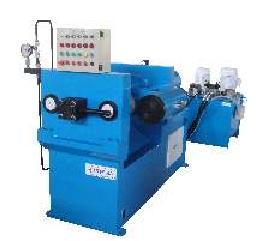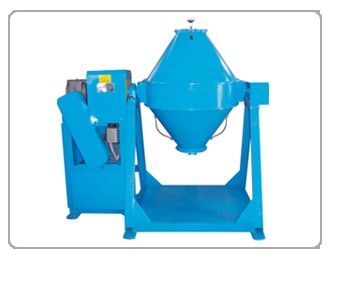Wire Straightening Cutting Machine for Welding Electrode Making Machine
Price 3000000 INR/ Unit
Wire Straightening Cutting Machine for Welding Electrode Making Machine Specification
- Cooling System
- Air Cooling
- Power Supply
- 3 Phase, 415V, 50Hz
- Usage & Applications
- Wire Straightening & Cutting for Welding Electrode Production
- Dimension (L*W*H)
- 2200 x 950 x 1200 mm
- Material
- Mild Steel with Powder Coating
- Speed
- Adjustable
- Control System
- PLC Based Control Panel
- Size
- Standard
- Drive Type
- Geared Motor Drive
- Automation Grade
- Automatic
- Noise Level
- < 75 dB
- Weight
- Approx. 450 Kg
- Machine Type
- Wire Straightening and Cutting Machine
Wire Straightening Cutting Machine for Welding Electrode Making Machine Trade Information
- Minimum Order Quantity
- 1 Piece
- Supply Ability
- 1 Piece Per Month
- Delivery Time
- 1 Months
- Main Domestic Market
- All India
About Wire Straightening Cutting Machine for Welding Electrode Making Machine
Features:
- Consumes less power
- Longer functional life
- Excellent operational efficiency
- Sturdy design
Specifications:
|
Model |
OMEGA 100 |
OMEGA 200 |
|
Power |
5 HP |
7.5 + 1HP |
|
Speed |
30 - 35 M/min |
65 - 70 M/min |
|
Wire Size |
2.5 to 6.0 mm |
2.5 to 6.0 mm |
|
No of Spinner dies |
5 Nos |
5 Nos |
High Cutting Precision and Versatility
Achieve consistent results with cutting precision of 1 mm and flexibility to adjust cut lengths from 300 mm to 5000 mm. The sturdy construction and high-quality blade material ensure not only exact cuts each time but also long-lasting operational performance, making the machine suitable for demanding production environments.
Automated and User-Friendly Operation
Equipped with a PLC-based control panel and requiring only a single operator, this machine is fully automatic, simplifying the process and reducing labor costs. The pneumatic clamping system guarantees secure handling of the input wire, enhancing both safety and workflow efficiency during welding electrode manufacturing.
Reliable Build and Efficient Performance
Manufactured from powder-coated mild steel and fitted with a geared motor drive, this machine is both durable and noise efficient, operating below 75 dB. Air cooling ensures that heat is managed effectively during continual use, while the adjustable speed feature allows optimal adaptation to various production needs.
FAQs of Wire Straightening Cutting Machine for Welding Electrode Making Machine:
Q: How does the pneumatic clamping feed mechanism improve the wire straightening and cutting process?
A: The pneumatic clamping system provides reliable and consistent wire feeding, minimizing slippage and ensuring each cut is precise. This mechanism also speeds up the operation while reducing operator fatigue, leading to greater overall efficiency in welding electrode production.Q: What types of wires can the machine process and how is the wire fed into the system?
A: The machine accepts mild steel wire supplied in coil or formed shape. Wires are fed automatically into the machine, straightened by rollers, and then clamped pneumatically for accurate cutting to the desired length.Q: When should the cutting blade be replaced and what material is it made from?
A: The cutting blade, fabricated from hardened alloy steel, should be inspected periodically and replaced when it shows significant dulling or wear. Regular maintenance ensures continuous high-precision cutting and prolongs the machines operational lifespan.Q: Where can this machine be installed and what are its power requirements?
A: Designed for industrial environments, this machine should be installed on a stable floor with adequate ventilation. It requires a 3-phase, 415V, 50Hz power supply, and consumes approximately 3 kW of power during operation.Q: What is the typical process flow for operating the machine?
A: To operate, load the wire coil onto the feeder, set the desired cut length via the PLC control panel, and start the machine. The wire is straightened, pneumatically clamped, cut to size, and the finished pieces are collected for further electrode production steps.Q: How does automation benefit the user in terms of productivity and manpower?
A: With PLC controls and an automatic feed mechanism, one operator can manage the entire process. Automation increases throughput, reduces errors, and lowers the risk of repetitive strain injuries, optimizing overall productivity in manufacturing settings.

Price:
- 50
- 100
- 200
- 250
- 500
- 1000+
More Products in Welding Electrode Machinery Category
Extruder Bell Housing Type for Welding Electrode Making Machine
Price 3000000 INR / Unit
Minimum Order Quantity : 1 Piece
Control System : Manual and Digital Control
Size : Standard Industry Size
Material : Mild Steel, Stainless Steel parts
Usage & Applications : Welding Electrode Extrusion
Extruder Twin Cylinder for Welding Electrode Making Machine
Price 3000000 INR / Unit
Minimum Order Quantity : 1 Piece
Control System : Electromechanical with safety interlocks
Size : Standard industrial size
Material : Mild steel body with hardened alloy cylinder
Usage & Applications : Used for extruding electrode flux onto welding rods
Briquetting Press for Welding electrode Making Machine
Price 3000000 INR / Unit
Minimum Order Quantity : 1 Piece
Control System : PLC/Relay based
Size : Standard / Customized
Material : Mild Steel (MS), Alloy Steel
Usage & Applications : Briquetting flux for welding electrode manufacturing
Welding Electrode Dry Mixer Machine
Price 3000000 INR / Unit
Minimum Order Quantity : 1 Piece
Control System : Panel controlled
Size : Standard/Compact, as per requirement
Material : Mild Steel with Powder Coating
Usage & Applications : Dry mixing of welding electrode flux ingredients

 Send Inquiry
Send Inquiry






 Send Inquiry
Send Inquiry Send SMS
Send SMS